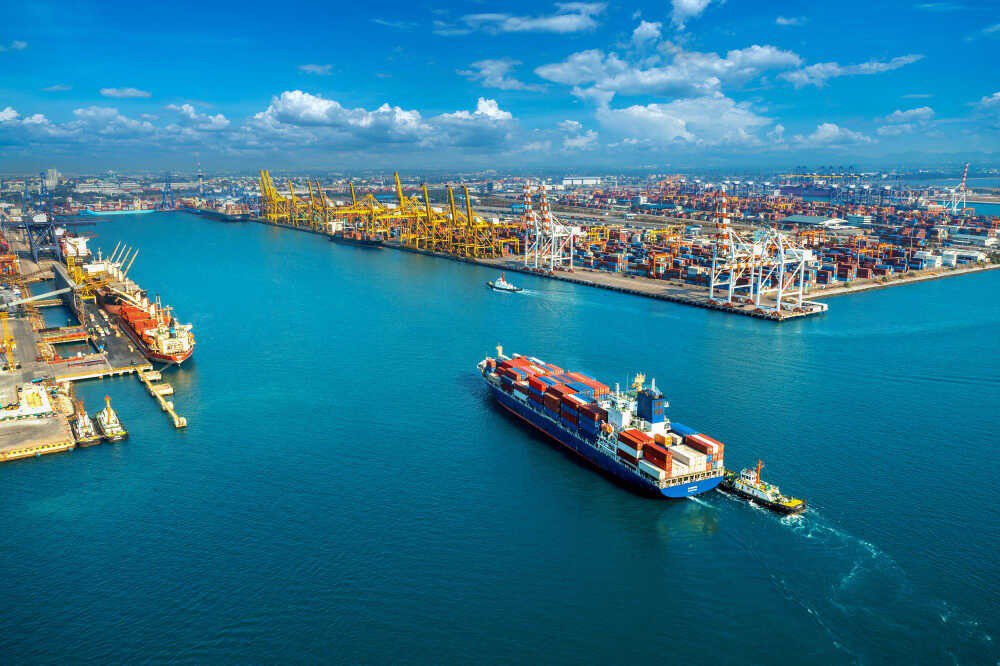
Understanding International Ocean Freight Shipping
International ocean freight shipping is a key part of global trade, helping businesses move large amounts of goods across countries efficiently. It involves shipping cargo by sea using container ships that can carry different types of goods, like dry, refrigerated, or bulk items. The process starts with booking shipments through freight platforms or logistics providers. The goods are then transported to the loading port and placed on a ship. After the sea journey, the cargo reaches the destination port, where customs clearance and final delivery are arranged. Ocean freight is affordable, making it a popular choice for international trade.
Significance of International Ocean Freight Shipping
International ocean freight shipping plays a pivotal role in the global economy by facilitating the seamless movement of goods across international borders. Handling over 80% of global trade by volume, it is the most cost-effective solution for transporting large-scale shipments. This mode of transport is particularly advantageous for industries dealing with bulky, heavy, or non-urgent cargo such as machinery, raw materials, and consumer goods.
Ocean freight services offer scalability, as they accommodate varying container sizes, from small loads to full container shipments. Modern freight platforms have further streamlined the process by providing real-time tracking, efficient documentation management, and customizable logistics solutions. Ocean freight shipping supports international trade by connecting remote markets and enabling businesses to access global supply chains. Its reliability, affordability, and capacity to transport massive volumes make it indispensable for sustaining global commerce and economic growth.
Key Players in International Ocean Freight Shipping
The international ocean freight shipping process involves several key players working together to ensure smooth cargo movement across borders. Shipping lines, such as Maersk, MSC, and COSCO, are at the forefront, operating the vessels that transport goods globally. Freight forwarders act as intermediaries, managing logistics, documentation, and coordinating with various stakeholders to streamline the shipping process.
Customs brokers play a critical role in ensuring compliance with import/export regulations, handling customs clearance, and mitigating delays at ports. Port authorities oversee the efficient operation of terminals, cargo handling, and vessel docking. In recent years, freight platforms have emerged as vital players, offering digital solutions like booking management, real-time tracking, and cost optimization.
Together, these entities form an interconnected network, driving efficiency, transparency, and reliability in the global supply chain while supporting businesses in reaching international markets effectively.
International Ocean Freight Shipping- Step-by-Step Process
International ocean freight shipping involves a series of well-coordinated steps to ensure the safe and timely movement of goods across borders.
- Shipment Booking: The process begins with the shipper selecting a shipping line or using a freight platform to book space on a vessel. Details like cargo type, volume, and destination are finalized during this stage.
- Cargo Preparation: The shipper packages and labels the goods, ensuring compliance with international shipping standards. Containers are then loaded and sealed for transport.
- Inland Transportation: Cargo is transported from the shipper's location to the port of loading via trucks or rail.
- Customs Documentation: Necessary paperwork, including bills of lading, commercial invoices, and export permits, is prepared and submitted for clearance.
- Port Operations: At the port, containers are loaded onto the designated vessel using specialized equipment.
- Sea Transit: The goods embark on their ocean journey, which can range from days to weeks, depending on the route and destination.
- Destination Port Handling: Upon arrival, the cargo undergoes import customs clearance and inspection.
- Final Delivery: The goods are transported from the port to the consignee’s location, completing the shipping process.
This systematic approach ensures efficient and secure global trade through ocean freight shipping.
Challenges of International Ocean Freight Shipping
International ocean freight shipping, while crucial for global trade, comes with several challenges that can impact efficiency and cost. One major issue is port congestion, which leads to delays in cargo loading and unloading, especially during peak seasons. Additionally, unexpected weather conditions like storms or rough seas can disrupt schedules and affect delivery timelines.
Customs clearance is another critical hurdle, as varying regulations and stringent documentation requirements in different countries can result in delays or penalties. Freight costs are subject to fluctuations due to volatile fuel prices, surcharges, and demand-supply imbalances. Container availability has also emerged as a significant challenge, particularly during periods of global trade disruptions.
The industry is grappling with environmental regulations aimed at reducing carbon emissions, requiring shipping companies to adopt cost-intensive measures. Addressing these challenges requires efficient planning, real-time tracking, and collaboration among key players in the logistics chain.
Ocean vs Air : Which one is better for International Shipping?
Choosing between ocean and air freight for international shipping depends on factors like cost, speed, cargo type, and environmental impact.
Ocean freight is the preferred choice for large, heavy, or bulky shipments. It is significantly more cost-effective than air freight, making it ideal for transporting goods like machinery, raw materials, and consumer products. Ocean shipping has a lower carbon footprint, contributing to sustainability efforts. However, it is slower, with transit times ranging from weeks to months, depending on the destination.
On the other hand, air freight is the fastest mode of transport, ideal for urgent shipments like perishable goods, pharmaceuticals, or high-value items. It offers shorter transit times, ensuring goods reach their destination within days. The cost of air freight is much higher, and it has strict weight and size limitations, making it less suitable for heavy or oversized cargo.
Ocean freight is better for cost-sensitive and large-scale shipments, while air freight is ideal for time-critical deliveries. Businesses must assess their specific needs, including budget, urgency, and shipment size, to make an informed decision. Combining both methods through multimodal solutions can also offer a balanced approach to international shipping.
Conclusion
International ocean freight shipping remains a cornerstone of global trade, offering cost-effective and scalable solutions for transporting large volumes of goods. While it comes with challenges like delays and fluctuating costs, it remains the preferred choice for many businesses. On the other hand, air freight provides speed for time-sensitive deliveries but at a higher cost. Ultimately, the choice between ocean and air freight depends on factors like shipment size, budget, and urgency. By understanding these options, businesses can make informed decisions to optimize their logistics strategy and enhance global supply chain efficiency.





 Get instant quote
and compare offers in real time
Get instant quote
and compare offers in real time